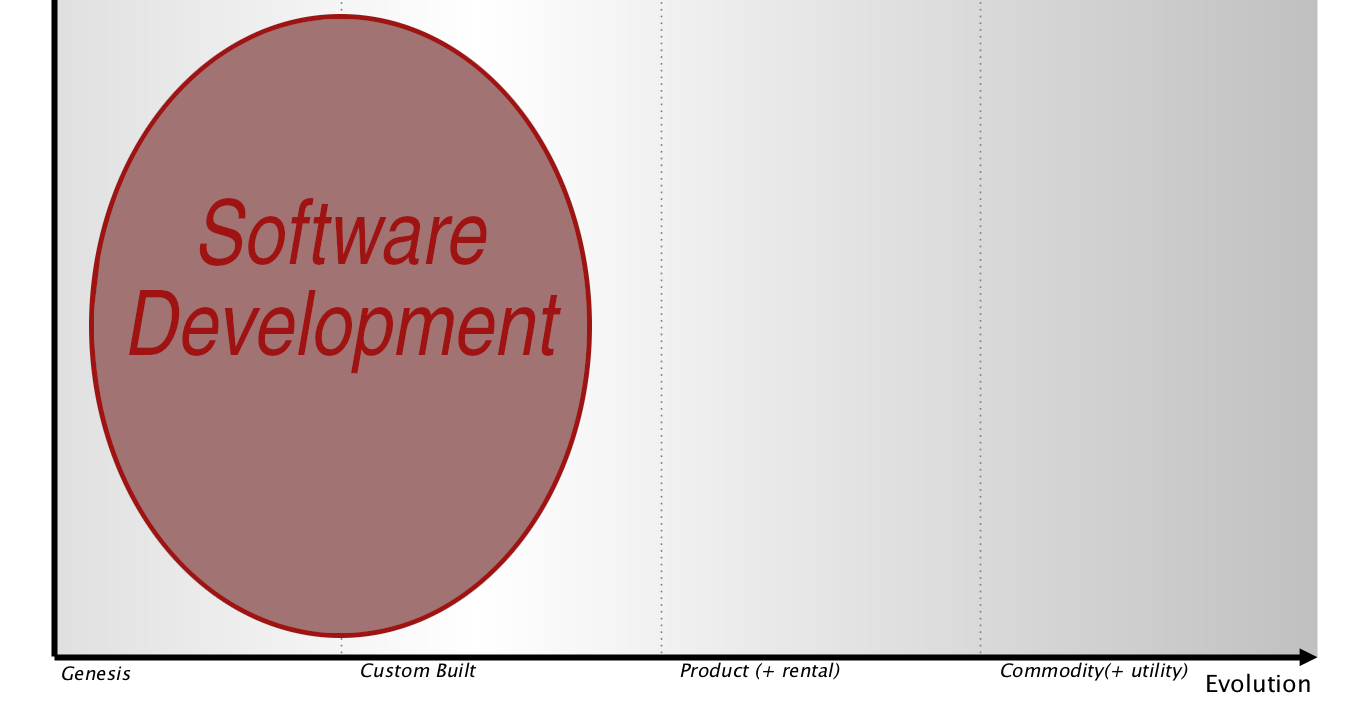Mapping software development
Software development is unpredictable. (And anyone who tells you otherwise is selling you something.)Continuing on my current thought process about Wardley Mapping, where does software development fit on such a map?
Not all software development is created equal, of course. So we can’t pin-point exactly where it goes. But I think we can make some general claims.
First, let’s recall that the X axis of a Wardley map shows us the evolution of a thing, with “Genesis” at the left, then moving through “Custom Built”, “Product/Rental”, and ending at “Commodity/Utility”.
Most notably, all software development is creating something new. (If you’re not creating something new, it’s not called software development. It’s called a file copy.) This means it belongs on the left side of the wardley map. We can’t rent software development, so it’s not a product, per se. We can rent software developers, as many an agency will tell you. But that’s different.
The act of creating software is not a product. It’s always custom. Even in the extreme case of repeated custom integrations that are all 98% identical, we never truly get as far right on the graph as the product stage. Because as soon as we do reach the product stage, we’re no longer doing software development. Then we’re selling software, perhaps as a SaaS, or VIA some other sales model.
Sometimes it’s even farther left than custom. It’s in the Genesis stage. As when creating a new language, or maybe a new framework, or some other highly experimental work.
What can this tell us?
This isn’t a revelation, but I think this visualization helps make it clear: Software development is unpredictable. (And anyone who tells you otherwise is selling you something.)



